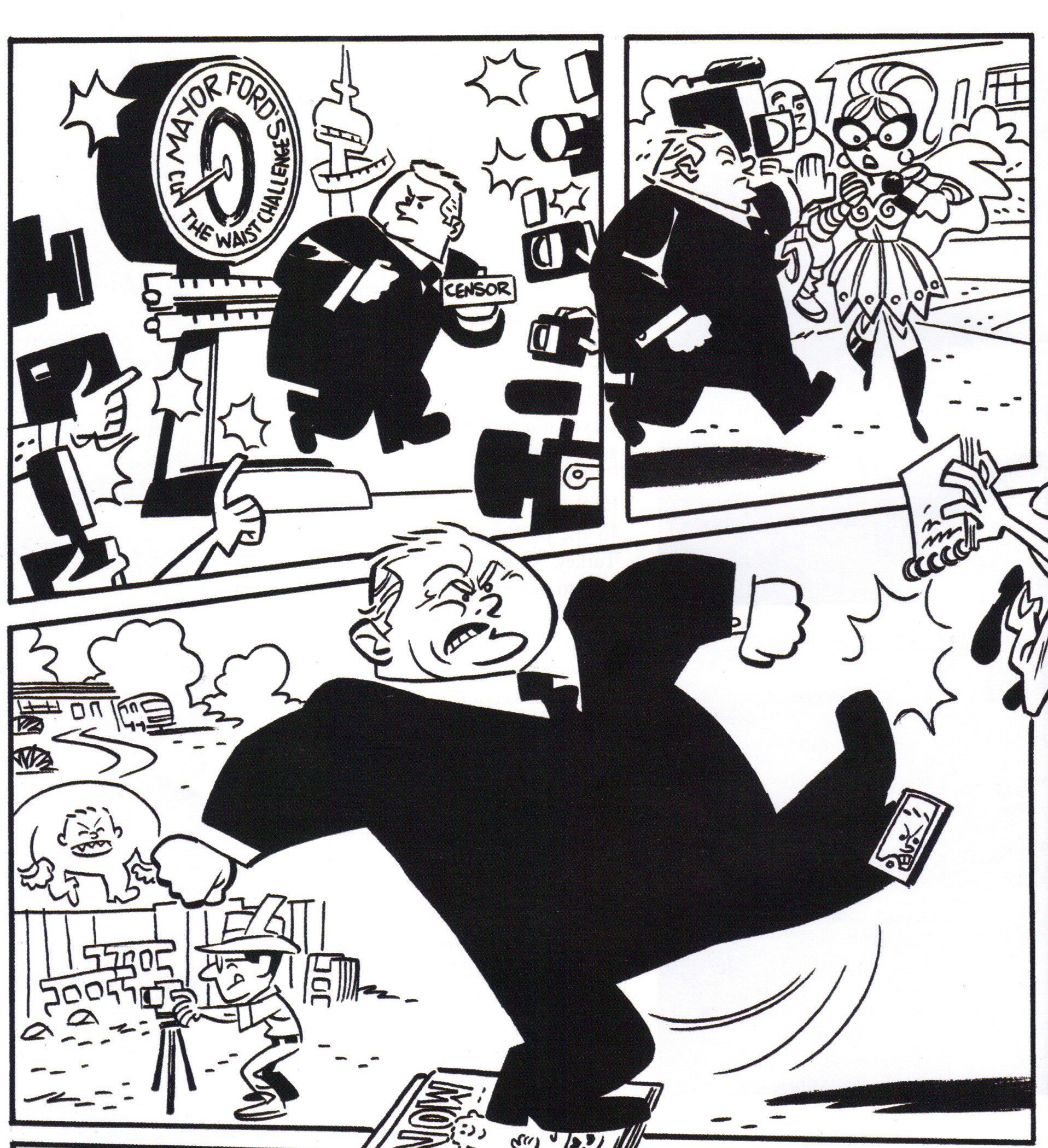All the Young Dudes Now Write the News
The growing epidemic of twentysomething journalists emerging as newspaper columnists
The crisis began as a response to declining newspaper readership. The crisis grew as editors across the country sought out brash journalists to increase readership among younger people. The crisis hit its peak when the The Globe and Mail’sLeah McLaren and the National Post’sRebecca Eckler began chronicling their lives in the country’s most prestigious newspapers.
What crisis, you ask? Generation 2000 journalists with barely any life experience penning their thoughts in dailies across Canada! Will our country survive the cataclysm?
Christopher Hutsul thinks so. The 26-year-old, Toronto Star I.D. section columnist, says young journalists are ideal for writing slice-of-life columns that will attract the 18-34 year-old demographic. “I’d rather be writing about things like pop culture as opposed to policy from our elected officials,” he says, “because I’m in tune with that culture right now.”
At the Star, eight per cent of reporters (32 out of 417) are between the ages of twenty and tweny-nine. Most were hired in the past four years. In fact, in 2001, twelve new reporters in their late twenties and early thirties were hired at the Star. Jon Filson, 29, current editor of the I.D. section of the Star, started out as a sports editor and moved up the ranks: “The Star has promoted some of us quickly to try and get younger people in roles where we’re actually making decisions.”
But how do diarists like Rebecca and Leah fit in? “It’s kind of like comparing Star Wars to The Godfather,” says Filson. “Star Wars is light, it’s pure entertainment, but it also has a message. The Godfather, on the other hand, is deeper. It’s considered to be the best North American movie ever. Both movies are incredibly popular. Is one better than the other? I don’t know.”
I asked Filson if he thinks young writers entice young readers. “I don’t know if that’s true. Look at Saturday Night Live. It’s produced by Lorne Michaels who’s, like, 60, so one does not necessarily lead to the other.” What the paper needs, he says, is young people who “get it,” who understand and who are able to write for their audience.
Joseph Brean, 26, the Post’s national news reporter, doesn’t think young writers would entice young readers, either, especially on his beat. In fact, he says it might undermine a reporter’s credibility if it was known that he or she was only a year out of school. Brean started as an intern at the Post before becoming a national reporter, but says he isn’t pressured in the newsroom because of his age. “By and large we’re a youngish newsroom,” he says, “and there’s no sense that people who are younger can’t pull their own weight.”
At the same time, Brean doesn’t think hard news can be used to attract the younger generation, because it depends on individual preferences of what people like to read, whereas pop culture is read by a mass audience. Perhaps this is why most papers stick to pop culture and social aspects of the paper when aiming to increase the 18-34 year-old demographic.
One extreme example of using pop culture to attract younger readers happened in Chicago. The Tribuneintroduced RedEye, which has a mandate to inform, entertain and provoke that Chicago’s “young city dwellers.” Shortly after RedEye hit the streets, the Chicago Sun-Times rode in with their own new tabloid, Red Streak, aiming it at the Internet generation. Both papers read more like printed scripts from radio or television newscasts than detailed newspaper stories. According to the RedEye’s Web site, this is exactly the point. Young people on the go just don’t have time to read fat newspapers, but they are enticed to read young writers. RedEye columnists are mainly in their twenties and thirties, and often drop an awkward mention of their age in columns.
Currently in Toronto, there are two free, tabloid-style dailies that publish during the working week. Metro and the new supermarket-style tabloid, 24, target public transit outlets like bus stops, underground subway nodes and train stations, hoping to capture a high proportion of young, professional and female readers. According to Metro’s Web site, these are the most attractive demographic groups for advertisers because of their purchasing power.
The success of the free dailies may be due to its approach towards younger readers, but most Canadian newspapers are attempting to change their newsroom demographics. Newspapers have to be careful when hiring. “Just because young people are hired doesn’t mean you have intelligent people,” says Hutsul. “If somebody wants to write about the little things in the day in a life of a 20-year-old woman it should be done with some thoughtfulness, wit, humour and insight. It should be something that both the younger generation and their parents can relate to. You don’t want to alienate the older generation.”
Young journalists perhaps have a niche because they communicate easily with their own demographic.Christie Blatchford started out as a copy editor at the Globe and then worked her way up to sports columnist at twenty-three. In 1983, she became a humour columnist at the Toronto Sun (http://www.torontosun.com), where she was, in effect, a diarist like Leah and Rebecca. Now she’s one of the country’s top columnists.
Christie turned out okay, so who says there isn’t hope?












